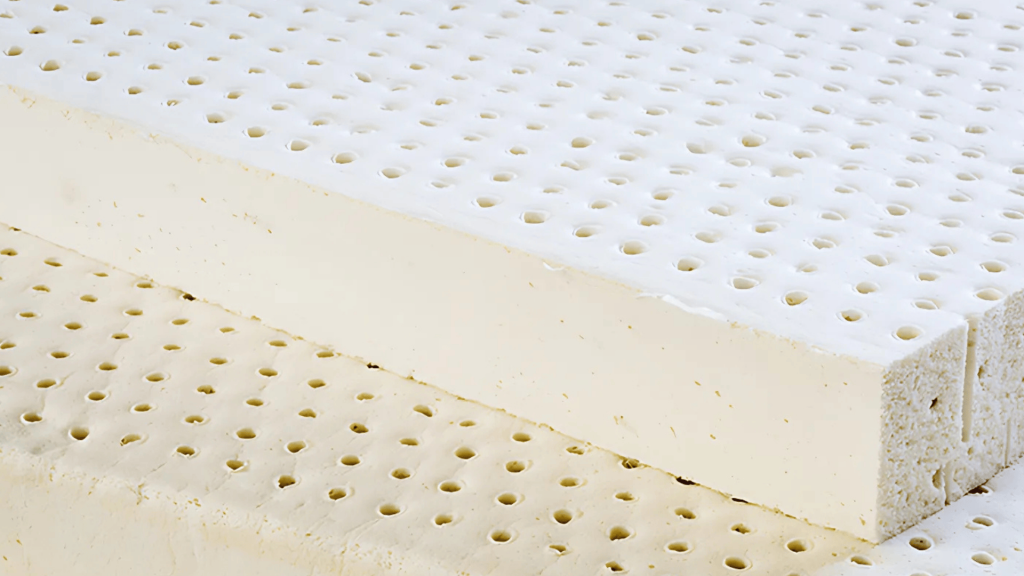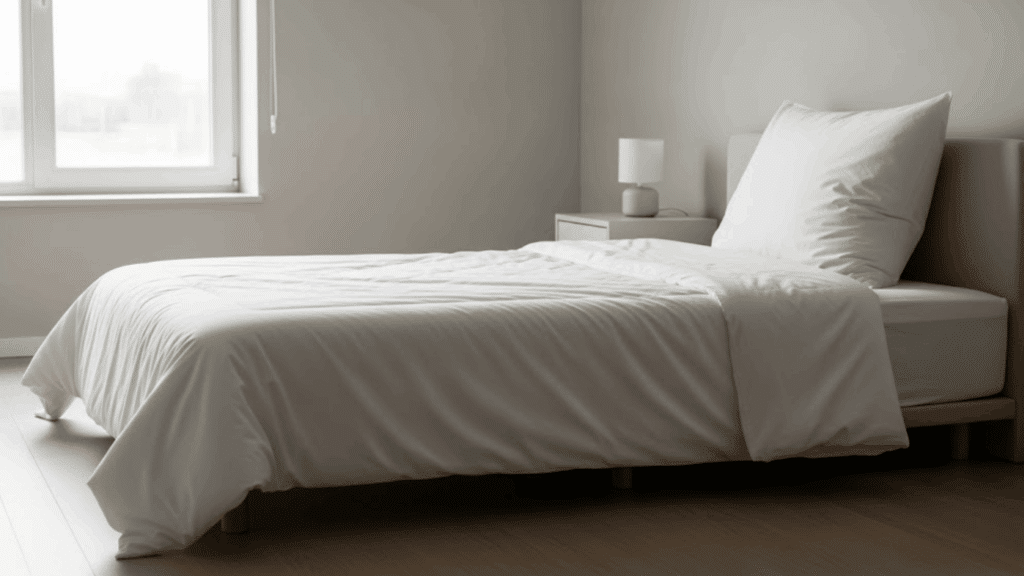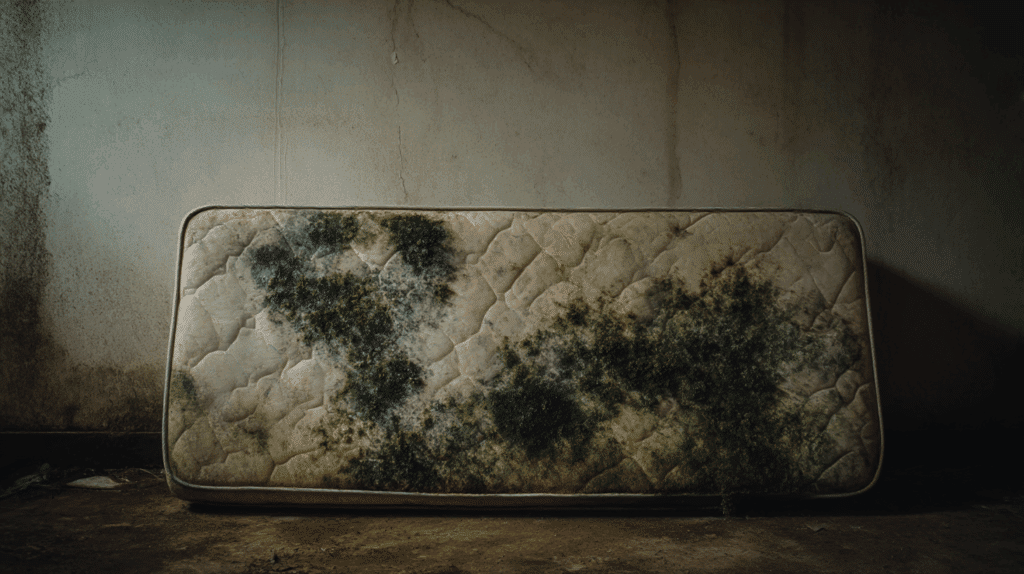“What if your bed could be made from tree sap and still be the comfiest thing ever?”
Ever wonder what makes some mattresses bouncy and comfy while others feel like sleeping on a rock? The secret might be hiding in rubber trees!
Did you know that a single rubber tree can produce latex for up to 30 years, giving about one cup of milky sap every other day – that’s enough to make a small pillow!
Just like bees make honey and cows give milk, rubber trees produce a remarkable substance called latex. This stretchy, bouncy material can turn your bed into the perfect sleep spot.
But here’s the thing – not all latex is created equal. Some comes from trees grown with lots of chemicals, while others are grown naturally, like a backyard garden.
Understanding the difference can help you pick the best option for your family’s health and comfort.
What Is Organic Latex?
Organic latex is a natural material that comes from the sap of rubber trees grown without harmful chemicals or pesticides.
Think of it like maple syrup from trees – but instead of sweetness, we get bouncy, stretchy material perfect for mattresses and pillows!
These rubber trees are grown with certified organic methods, avoiding chemicals. Organizations like GOLS and GOTS ensure everything remains clean and natural.
The best part? Making organic latex doesn’t hurt our planet. It’s processed without toxic chemicals, making it safe for families and friendly to the environment.
Nature gives us this amazing gift that’s both comfy and eco-friendly!
What Is Natural Latex?
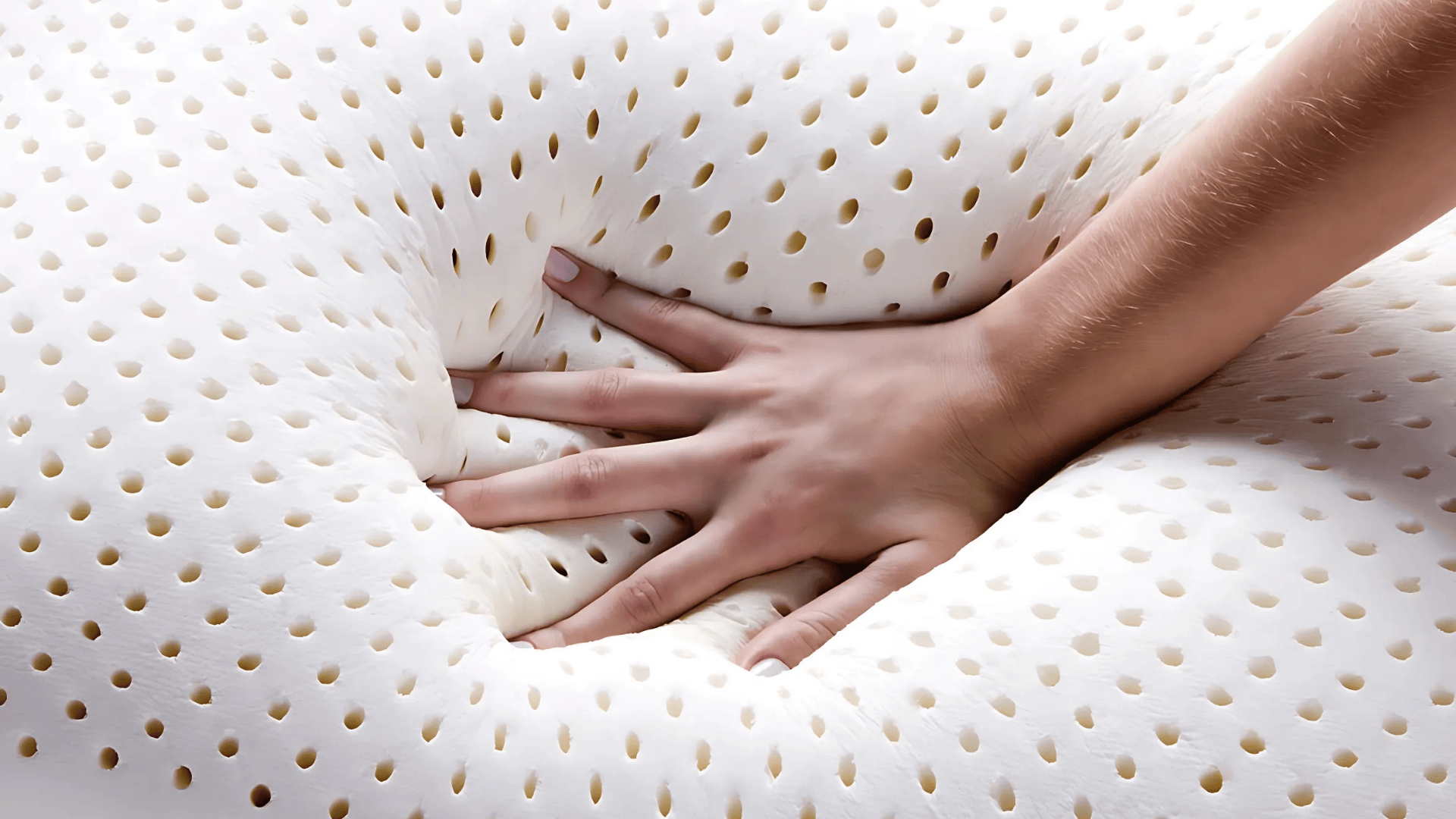
Natural latex comes from the milky white sap of rubber trees, just like maple syrup comes from maple trees!
Workers make small cuts in the bark and collect the sticky liquid that drips out. This sap gets turned into bouncy, stretchy material for mattresses and pillows.
While natural latex is 100% from trees, it’s different from organic latex. Natural latex might come from farms that use pesticides and chemicals to grow the trees faster. It also usually has some safe additives mixed in during processing.
Most natural latex lacks organic certification, meaning the farming methods aren’t as strictly controlled as those for organic products. But it’s still way more eco-friendly than fake, petroleum-based latex!
Organic Latex vs Natural Latex: What’s the Real Difference?
Both organic and natural latex come from rubber trees, but they’re made very differently.
Think of it like the difference between organic apples and regular apples at the grocery store – they’re both apples, but one follows stricter rules about how it’s grown and made.
| What’s Different | Organic Latex | Natural Latex |
|---|---|---|
| Farming | No chemicals ever | Some chemicals OK |
| Pesticides | Banned completely | Often used |
| Who Checks It | Strict certification required | Basic safety rules only |
| Purity | 95%+ pure, super clean | Pretty clean, some leftovers |
| Environment | Best for Earth | Good, but not perfect |
| Price | More expensive | Less expensive |
The main takeaway? Organic latex follows much stricter rules from tree to finished product, while natural latex is still good quality but allows some shortcuts.
Both are way better choices than synthetic latex made from petroleum, but organic latex is the premium option if you want the cleanest, most eco-friendly choice.
Note: Always look for official certification labels like GOLS (Global Organic Latex Standard) or GOTS (Global Organic Textile Standard) when shopping for organic latex products to make sure you’re getting the real deal.
Properties and Benefits of Organic Latex
Imagine sleeping on a cloud that’s also good for the planet! Organic latex is made from rubber tree sap and offers great benefits for your bedroom.
It naturally fights off dust mites, mold, and allergens that can make you sneeze and sniffle at night.
This bouncy material lasts for years while giving your body perfect support and pressure relief. Unlike regular mattresses that trap heat, organic latex breathes like your skin, keeping you cool and comfortable all night long.
Best of all, it’s natural and chemical-free, so you don’t breathe in toxins while sleeping. When replacing, organic latex decomposes naturally without harming the environment!
Properties and Benefits of Natural Latex
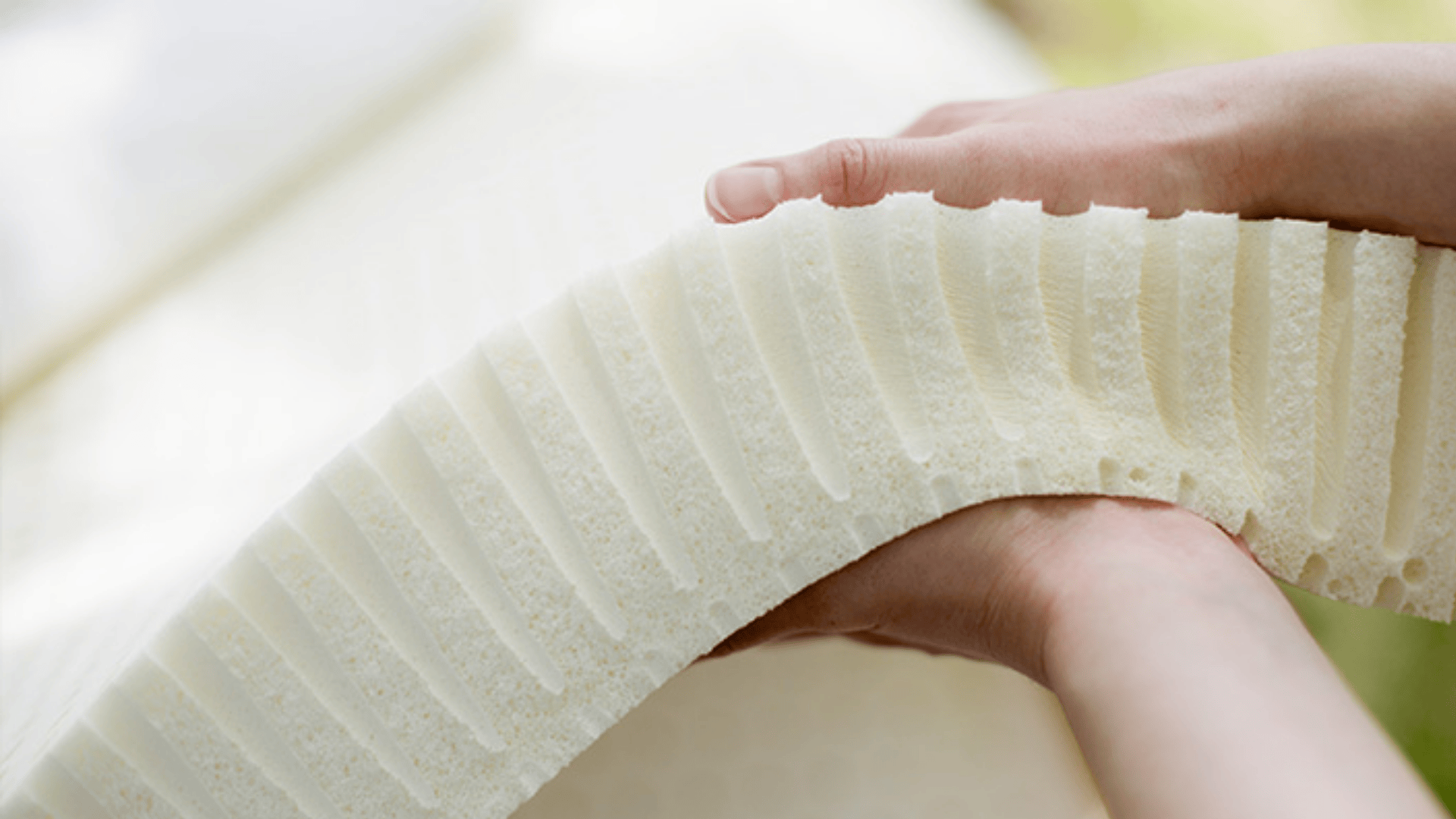
Natural latex is like nature’s perfect pillow and mattress material! It comes from rubber trees and gives you amazing comfort that bounces back night after night.
Your body gets great support while you sleep, and these beds last for years and years.
The best part? Natural latex is good for our planet because it comes from trees that keep growing. It costs less than fancy organic latex but still gives you most of the same benefits.
Some natural latex might have tiny amounts of safe additives, but it’s still way better than fake materials. It’s comfort that makes sense for your body and your wallet!
Potential Drawbacks of Organic and Natural Latex
Thinking about switching to organic or natural latex? While these materials offer many benefits, it’s helpful to know about some potential challenges before making your decision.
Let’s break down what you might encounter with each option.
| Material | Main Drawbacks | What This Means for You |
|---|---|---|
| Organic Latex | Higher cost | You’ll pay more upfront, but it may last longer |
| Heavier weight | Moving furniture or mattresses takes more effort | |
| Limited availability | Fewer stores carry it, so shopping takes more time | |
| Natural Latex | Possible pesticide traces | The rubber trees might have been treated with chemicals |
| Less clear production info | It’s harder to know exactly how it was made | |
| Both Types | Latex allergy risk | Some people are allergic, but it’s pretty rare |
Remember that these drawbacks don’t mean organic and natural latex are bad choices – they’re still great materials for many people. Understanding these points just helps you make the best decision for your needs and budget.
Note: Latex allergies affect only about 1-6% of people, and the proteins that cause reactions are often removed during processing, making allergic reactions to latex products uncommon.
Choosing the Right Latex for You
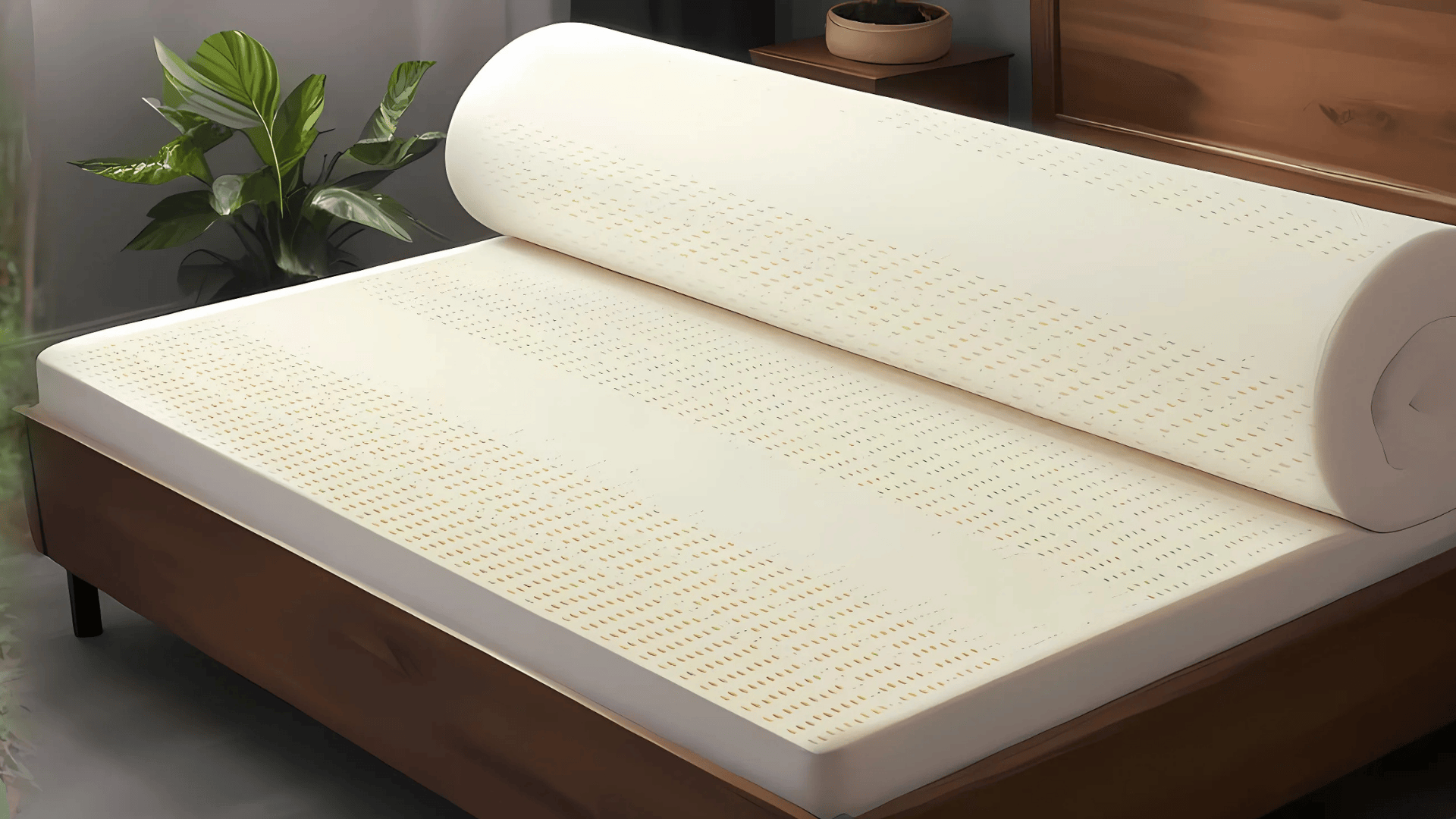
When choosing between organic and natural latex, consider what matters most to you.
Organic latex costs more but has strict rules about how it’s made – no nasty chemicals allowed! It’s perfect if you want the cleanest option for your family’s health.
Natural latex remains a viable option and is safer than regular foam, although it may contain some processing chemicals. If you’re on a tight budget, natural latex is a great option and far superior to synthetic alternatives.
Look for certificates like GOLS or Oeko-Tex to make sure you’re getting the real deal. Both types are way better than cheap foam mattresses!
Final Words
Imagine your bed made from the milky sap of rubber trees, giving you the perfect mix of bounce, comfort, and eco-friendliness!
If you choose organic latex, grown without chemicals, or natural latex, which is still better than synthetic materials, you’re picking a mattress that supports your body and protects the planet.
Organic latex costs more but offers extra safety for your health and the Earth. Natural latex is wallet-friendly and still a strong, comfy choice.
Both can help you sleep cooler, cleaner, and comfier night after night. So why settle for boring, rock-hard beds when you can enjoy nature’s gift?
Ready to switch to a mattress that feels like a dream and cares for the Earth? Tell us in the comments below: Would you try a mattress made from tree sap? We’d love to hear your thoughts!

